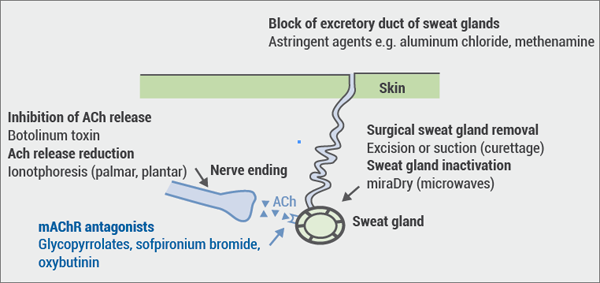“Malignant melanoma in minors is a rare event”, said Dr Ryan Kelm of the Feinberg School of Medicine [2].
Despite this fact, efforts for prevention are still important. Recent reports have observed an increasing rate of paediatric melanoma up to 2004, followed by a decrease in the United States [3,4]. Paediatric melanoma decreased by 11.58% per year from 2004–2010 [4]. A similar trend was noticed in the Netherlands [5].
Therefore, current incidence rates from the National Surveillance, Epidemiology, and End Results (SEER) cancer database were assessed in a population-based study. The SEER database, providing data from 2000–2014, was searched for data from patients aged 0–19 years, and a diagnosis of malignant melanoma. A total of 1,796 cases (in 218 children aged 0–9 years, and in 1,578 adolescents aged 10–19) of melanoma were detected. Although the overall incidence rates for melanoma were only five per one million, there was a marked increase in the incidence rate of adolescents (from 1.3 in the 0–9-year-olds compared to 8.7 in the 10–19-year-olds).
Superficial spreading melanoma is more common in adolescents than nodular and other manifestations. In children and adolescents, incidence rates were significantly higher in females. Incidence trends were significantly decreased in adolescents (by an annual per cent change of -4.5; P<0.05), but not in children. The five-year survival rate was higher in adolescent females (97.1%) compared to adolescent males (92.6%).
“Our findings are congruent with recent studies suggesting that there continues to be a decrease in the incidence of overall paediatric melanoma, “concluded Dr Kelm. In addition, five-year survival improved compared to earlier reports.
Lower melanoma risk in coffee addicts?
Two meta-analyses assessed a possible correlation of coffee drinking and melanoma risk [6,7]. In one meta-analysis, two case-control and five cohort trials were evaluated. The pooled relative risk of malignant melanoma was reduced by 19% in the highest vs. the lowest consumption of coffee. Strikingly, there was no association between the drinking of decaffeinated coffee and melanoma risk [6]. The authors conclude that caffeinated coffee might have chemo-preventive effects against melanoma.
Another analysis included 23 studies with 2,268,338 participants. Compared to the lowest-level consumption, total coffee reduced the relative risk of melanoma by 20%, caffeinated coffee by 15%, and decaffeinated coffee by only 8%. In addition, a clear dose-response relationship could be observed: the melanoma risk decreased for each cup/day by 3% for all coffee, and by 4% for caffeinated coffee [7].
Another protective habit after diagnosis of melanoma is the use of acetyl salicylic acid (ASS) [8]. Researchers evaluated data from a retrospective cohort of 1,522 patients who were diagnosed with melanoma between 2000 and 2014 and were followed up through September 2016. In patients diagnosed with a melanoma Stage II or III, ASS use was associated with a survival benefit. ASS use was associated with longer overall survival in univariate analysis and after controlling for age, sex, stage, and treatment modalities. In turn, patients taking ASS before diagnosis were less likely to be diagnosed with Stage III or IV disease. Therefore, the therapeutic potential of ASS will now be evaluated in a clinical trial.
2. Kelm, C. Abstract 6722, AAD Annual Meeting, February 16–20 2018.
3. Strouse, JJ. et al. J Clin Oncol 2005;23:4735–41.
4. Campbell, LB. et al. J Pediatr 2015;166:1505–13.
5. Eggen, CAM. et al. J Eur Acad Dermatol Venereol 2017 Oct 28.
6. Liu, J. et al. PLoS one 2016 Jan 27;11:e0147056.
7. Wang, J. et al. Eur J Nutr 2016;55:1317–29.
8. Rachidi, S. et al. J Am Acad Dermatol January 6, 2018
Posted on
Previous Article
« IL-17C inhibition in AD and new oral treatments Next Article
A glimpse into the future »
« IL-17C inhibition in AD and new oral treatments Next Article
A glimpse into the future »
Table of Contents: AAD 2018
Featured articles
Letter from The Editor
Living in the golden age of psoriasis and atopic dermatitis therapies
Late-breakers
IL-17C inhibition in AD and new oral treatments
Dual JAK/SYK inhibitor and anti-IL-33 blockade
Psoriasis: Selective IL-23 blocker, analysis of VOYAGE-2, dual IL-17 inhibitor and ustekinumab
Hyperhidrosis: Soft molecule and anticholinergic towelettes
Behcet’s syndrome and hidradenitis suppurativa
Psoriasis: an update
Oral therapeutics, supersaturation and excimer laser
Psoriasis management online?
What's hot in atopic dermatitis
AD sleep disturbance, antihistamines and osteoporosis
New topical and systematic treatments
Acne management
Winter effect and preventing scarring
Restrictive antibiotic use and novel tetracycline
Alopecia Areata
Melanoma
Melanoma incidence continues to rise in Europe
Lesions in paediatric patients and possible correlation with coffee drinking
CNNs and targeted combination therapy
Pearls of the posters
Improvement in impact of genital psoriasis on sexual activity with use of ixekizumab
Intralesional cryosurgery and itching in psoriasis
Related Articles
December 20, 2018
Dual JAK/SYK inhibitor and anti-IL-33 blockade

December 20, 2018
New agents and combination therapy

December 20, 2018
Hyperhidrosis: Soft molecule and anticholinergic towelettes
© 2024 Medicom Medical Publishers. All rights reserved. Terms and Conditions | Privacy Policy

